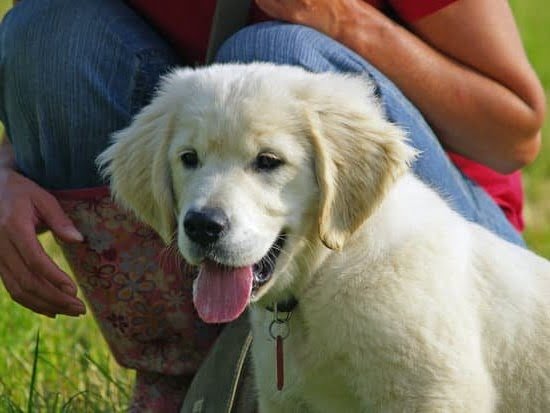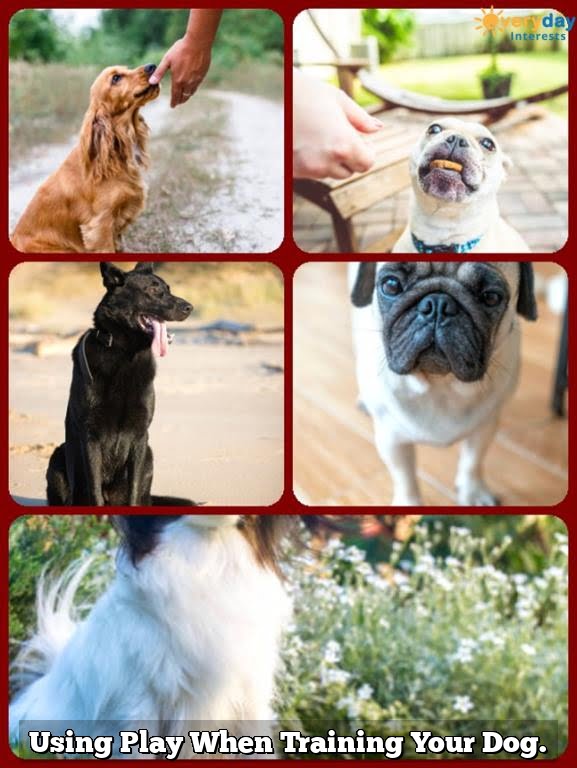Introducing a Step-by-Step Guide
Step 1: Understand why your dog is biting – determining the underlying cause of the play biting is key to properly addressing it. Identifying whether your pup is playing and simply being overly-exuberant or if there’s an issue with aggression.
Step 2: Set clear boundaries – providing a set of rules that your puppy should follow can be beneficial in teaching them proper behavior. This could include only allowing kisses on the face, no biting allowed, no jumping up on people, etc.
Step 3: Be consistent and consistent in correcting inappropriate behavior – ensuring you respond consistently when your pup bites and acting quickly each time teaches them not to bite. When bitten, say “no” firmly and remain calm but stern. The message should be clear: if they bite you, it upsets you and they will get scolded for their misbehavior.
Step 4: Redirect their biting behaviors elsewhere – redirection will help reinforce that they should not bite people but engaging in other activities such as chew toys or tug-of-war can still be stimulating while avoiding any negative behaviors associated with play biting people. When training a pup to not play bite, it can be extremely beneficial to incorporate the use of treats. In order to avoid confusing the pup and have a stronger reward system that is more likely to yield desired behavior, it is important to use the same type of treat each time for reinforcement. Additionally, make sure that these treats are given consistently when proper obedience is displayed. Having an established pattern will help the pup understand which behaviors will lead them to receiving their rewards and encourage less aggressive playing. The timeliness of the treat delivery and accuracy of rewarding positive behaviors is key as well. The moment your pup exhibits a good behaviour such as responding positively to commands or moving away from other pups they should be rewarded with a treat in order to reinforce this not-play biting behavior so they understand what it looks like and how to act instead. This creates a strong bond built on trust between animals and owners which leads to learning in more efficient ways than if there were only consequences for wrong behavior and no praise for correct actions. The first step in managing the environment is to understand your puppy’s stages of development. Puppies go through rapid phases of development and are constantly motivated to explore and experiment with their surroundings. In order to help control your pup’s behavior, it’s best to remove items from their reach that can trigger play biting or be damaged by them. This means avoiding leaving rummaging cloths, shoes and objects scattered on the ground as these can act as stimuli for the pup to engage in play biting behaviors. It’s important also to avoid playing rough games like wrestling or tug of war with your pup as this can lead to increased levels of excitement which can result in more play biting. Playing interactive games such as fetch or hide and seek are much better ways of bonding with a puppy while still stimulating and exercising them in a safe way. If play biting becomes a problem try incorporating toys into interactions and give them something they can bite down on that isn’t your arm or leg. Additionally, training sessions should be short (a few minutes at most), stress free, fun and reinforced with lots of positive rewards for good behavior during the session such as treats and verbal praise. One of the more common challenges associated with training a puppy not to play bite is their natural eagerness and enthusiasm when interacting. Younger dogs, in particular, tend to bite and nibble during interactions and this, if left unchecked, can become an issue. It is best to start training puppies as early as possible to discourage any behavior that may become problematic in the future. For example, one effective way to overcome this challenge would be through teaching redirection commands. To do this, when your puppy starts nipping or biting, calmly stop the activity and redirect their attention onto another toy or treat (while offering verbal praise so they learn that biting is not rewarded). Another method that can be used is simply removing yourself from the situation whenever your puppy bites you. By doing this it will help communicate that biting results in no interaction. Of course, it’s important to remember to always reward desirable behaviors through positive reinforcement. Immediately after your pup stops nibbling offer them a treat or a toy that is less likely to lead them into biting as well as verbal praise for their good behavior. It should also be remembered that puppies often lack basic impulse control which means consistency is key when tackling behaviour like playing biting. When done correctly, disciplining gently but firmly should result in changes over time and help create a calm atmosphere where everyone can learn to interact without fear of nips! There may be those who are hesitant to employ these methods, or who think that trying to train a dog not to play bite is an unnecessary or cruel endeavor. However, taking the time to train a dog not to play bite is essential for two reasons: first, it can prevent potential harm from coming to your pet if they unexpectedly begin biting people; and second, it teaches a dog how better to safely interact with their human companions so that there can be healthy, enjoyable exchanges between them. Furthermore, the methods discussed here are simply advice – all owners should remember that any training must take into account the breed nature of their particular type of animal and adjust their approach accordingly. At the conclusion of the training period, you should be able to expect that your dog understands that play biting is off-limits. Your pup should understand when it is ok to bite and when they should not. On top of understanding which behavior is appropriate and which isn’t, your pup should also consistently re-learn how to properly interact with people and other animals. They may even become more comfortable with interacting with friends or family members. It is important to provide lots of consistency and positive reinforcement throughout their learning process so that your pup can feel secure in their behavior restrictions. In addition, it may be beneficial for you to remind the pup about their recent training whenever engaging in a play activity outside in order for them to remember not to get too rough during play. Following this process will ensure that your pup knows not to play bite after their training has concluded. Q: What is the best way to train my dog not to play bite? A: The best way to train your pup not to play bite is by redirecting their behavior. When they go to bite you or another person, use a toy or chewable object as a distraction, and reward the desired behavior with praise and treats. Start by teaching them basic obedience commands such as “Sit”, “Stay” and “Wait”. Make sure to always stay consistent by consistently using these commands whenever they attempt to play bite, as this will reinforce that this type of behavior will not be tolerated. Additionally, establish boundaries for acceptable playtime interactions for your pup such as no nudging or licking. Petting and playing time should only be allowed when both you and your pup are relaxed and comfortable in order for behaviors like play biting to diminish over time. Welcome to the blog! I am a professional dog trainer and have been working with dogs for many years. In this blog, I will be discussing various topics related to dog training, including tips, tricks, and advice. I hope you find this information helpful and informative. Thanks for reading!Managing Environments
Explaining Common Challenges
Addressing Criticism
Preparing for Results
Answering FAQs






